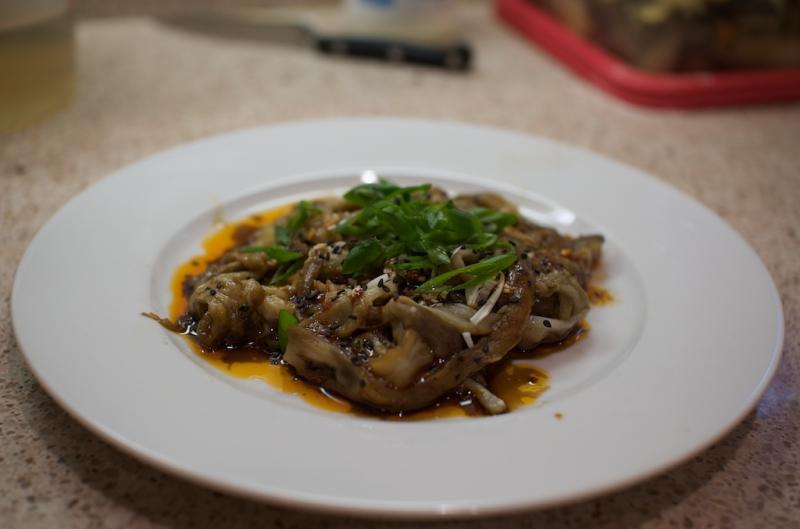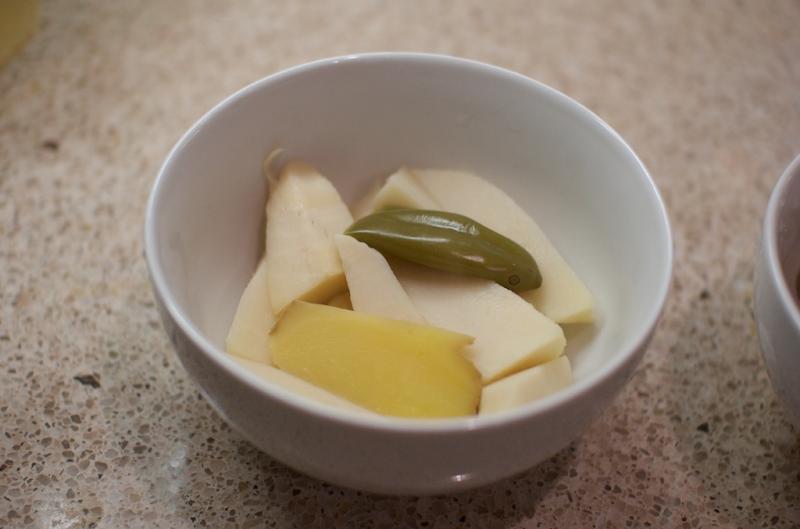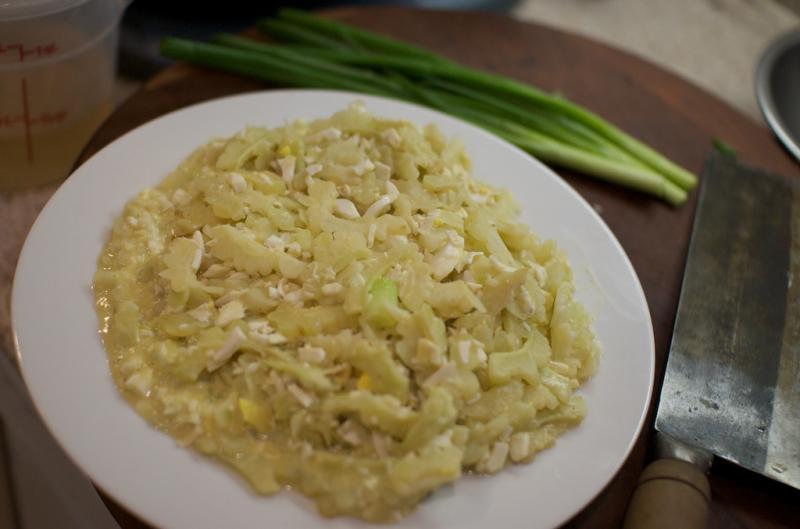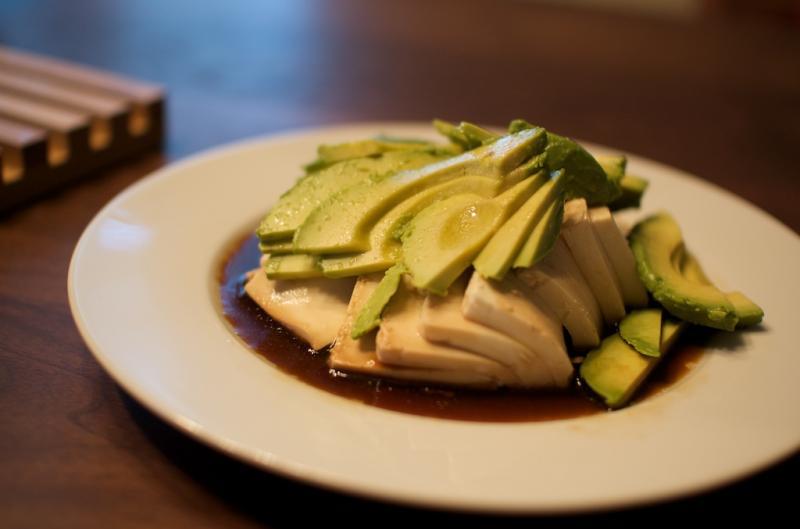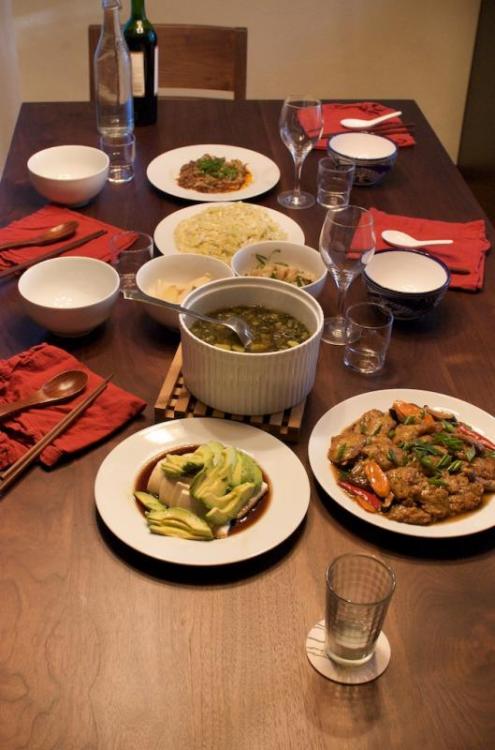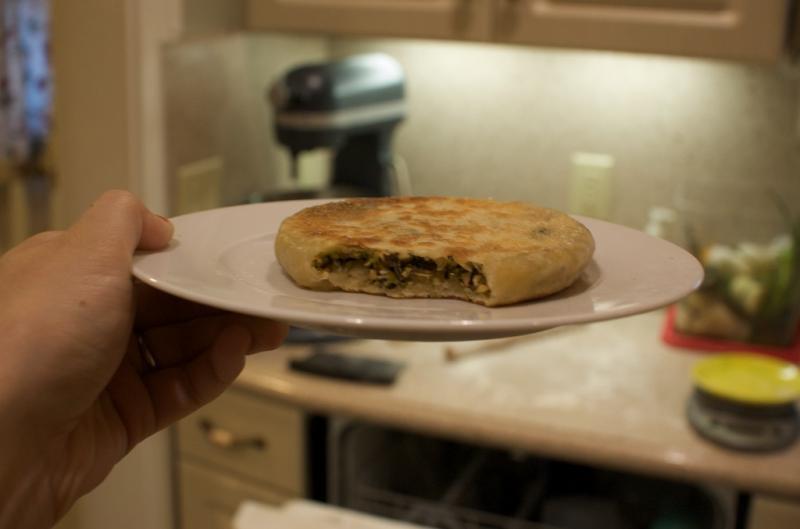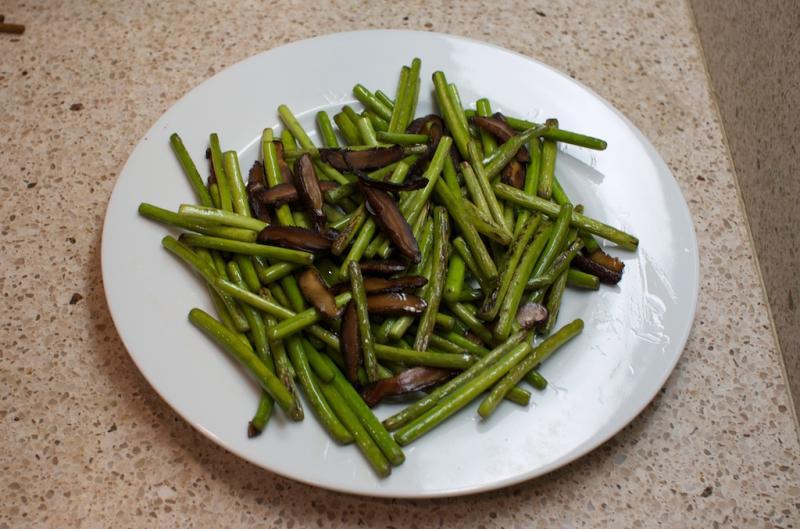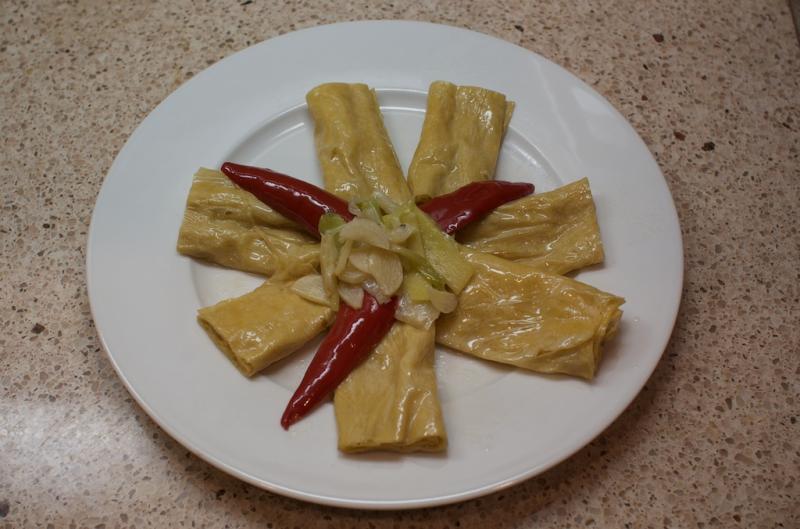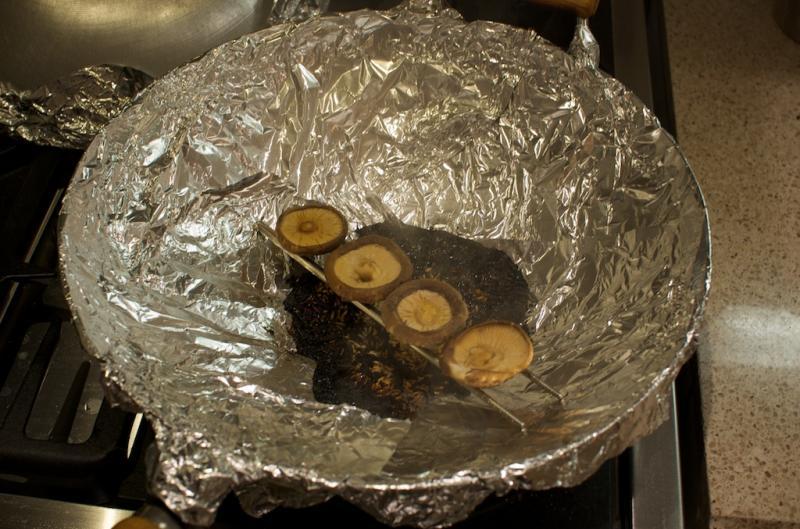
Will
participating member-
Posts
461 -
Joined
-
Last visited
Content Type
Profiles
Forums
Store
Help Articles
Everything posted by Will
-
Cooking some garlic chives in it (as mentioned above), rubbing them all around the wok's surface is also a good idea, and I also like heating kosher salt in the pan until it turns grey. Garlic chives (jiu cai / gow choy / nira) are not the same thing as regular chives - you'll generally only find them at Asian markets.
-
Some of y'all are seriously paranoid. Mold happens, and "spores" are all around. You don't have to disinfect your entire kitchen just because of a little mold!
-
Should it ideally use Western style garbanzos, Indian style black garbanzos (kala chana; the ones used to make chana dal, but not split), or what?
-
My (Chinese) MIL cooks up the thin-sliced watermelon rind with some oil, salt, garlic, and I think not much else. It's pretty tasty. One of those dishes that probably originated in necessity, but is pretty tasty. Doing a quick web search, I see some more elaborate recipes, including this one, which has meat, garlic chives, and some other ingredients.
-
I don't think ceviche is ever served with any kind of chip, is it? I believe in some regions, Avocado is served in the ceviche - maybe just ditch the guacamole, and use the avocado in your ceviche?
-
Town Food makes a great one, but it's quite expensive (around $3k, I believe). See the second item on http://townfood.com/ranges_mobile.html Sometimes Asian markets / stores will sell really low-end ones I haven't personally found anything great in the middle tier quality wise. What about just taking a metal food-service cart, and then putting a propane based wok burner on top (the burners like the ones in the picture above can be found for around $50-150 US). That's basically what it looks like that cart is.
-
According to Wikipedia (and this makes sense to me), maltose syrup and sugar are what were originally used. I imagine maltose would be a little less sweet than honey.
-
My wife and I made dinner for my in-laws tonight. We have been trying out a bunch of stuff from Fuchsia Dunlop's new book. First up was Smoky Eggplant with Garlic (火烧茄子, p63). I've been intrigued by this one since I first saw the recipe, since it's so different from the usual ways (deepfried, boiled, 'xiao chao', etc.) you usually have Chinese eggplant. My in-laws say that they make a similar dish in Shanghai, but just seasoned with soy sauce and sugar, instead of the Sichuanese version in the book. I think this is actually one of my favorite recipes I've made so far (charring the eggplants is a bit time-consuming, though). It is also a good "make-ahead" kind of recipe, which is one reason I picked it. The eggplant has that same great smoky flavor you get from baba ganouj. I wasn't sure the seasoning would be balanced, but the flavors worked well together. Second dish was fresh "dong sun" ("winter" bamboo shoot). Since I think it's a bit past the season, this was a bit tough. I was trying to copy the recipe from a local restaurant - I stewed it in rice-rinsing water with ginger slices, jalapenos (intact, with their seeds), and a little salt / sugar. Came out with more spice than I expected. Also, I made a salted duck-egg / white bittermelon dish that I copied off of a TV cooking show. You cook the (cooked) duck-egg yolks for a bit in oil, add green onion whites and the egg-whites, then add blanched bitter melon (preferably white) and cook together; then add some water or stock. After the water cooks down, you add some rice wine (salt, if any more is needed, and MSG if you want), and finish with some sesame oil. Then "Silken Tofu with Avocado" (鳄梨豆腐; p42). I was a bit skeptical of this one, but it was pretty good. I'm just sad we didn't have any wasabi (fresh or otherwise), because I do think it would have gone well with it. Obviously, this isn't a traditional dish. It's based on a dish featuring tofu, uni, and avocado that the book's author had at a restaurant in Southern Taiwan. Pictured also in the wide shot: Fava Bean and Snow Vegetable [xuecai] Soup (豆瓣雪菜汤, p244) -- second time making this, but a little closer to the actual recipe this time. I thought it was pretty good. Instead of chicken stock, we used a kelp / soybean sprout broth, along with a little shitake soaking liquid. These fava beans were frozen. I also found fresh "king" fava beans at the farmers market. I think these are the kind you find as dry Chinese snacks (with garlic) - they're larger than the normal ones, and a more brown-red color. My wife cooked them with scallion slices, scallion greens, and some soy sauce. And, reprised Pipa Tofu (琵琶豆腐) (see above). Earlier in the week, we made some vegetarian 'xian bing' out of leftovers. Tasted pretty good - I need to work on my wrapping skills still, though.
-
There's a guy here in LA who's been making them. I haven't managed to make it there yet. There are some photos here: http://theroamingbelly.blogspot.com/2012/05/dragon-beard-candy-cuz-i-like-my-candy.html
-
Whole Spice has a good selection (including Long Pepper, Grains of Paradise, and various types of middle-eastern dried peppers that even Penzey's doesn't carry). They sent me unrequested junk email after I ordered from them, which was annoying, but the quality of the product seems good.
-
I don't have much basis for comparison - I've worked with green garlic before, but not with scapes. After several minutes of stir-frying, some of them were somewhat tender, but a lot were still a bit tough, though not horribly fibrous.
-
Cross-post from the "Chinese Cooking at Home" thread... garlic-scapes stir-fried with smoked shitake mushrooms (vegetarian variation of Stir-Fried Garlic Stems with Bacon - La Rou Chao Suan Tai - 腊肉炒蒜薹 from p206 of Fuchsia Dunlop's new cookbook). The normal recipe is just garlic scapes, stir-fried in a bit of oil with thick cut Chinese bacon til tender / slightly puckered. The vegetarian variation in her cookbook is to use button mushrooms instead. I don't love button mushrooms that much, so I tried it with some shitakes which I tea-smoked and then marinated for a bit in soy sauce, water, sugar, salt, and sesame oil. I'm not sure if these were a bit old (they're imported from Mexico, not from the farmers market), or if I just didn't trim off enough of the base, or cook them evenly enough, but some of them were cooked about as the directions stated (just tender), but others were a tiny bit tough.
-
A couple recent meals featuring a bunch of stuff from Fuchsia Dunlop's new book (out in UK, should be out in North America soon). Sorry for any typos. This is what my wife cooked up last night: Smacked Cucumber in Garlicky Sauce (Suan Ni Pai Huang Gua 蒜泥拍黄瓜) (p34) Silken Tofu with Soy Sauce (Xiao Cong Ban Dou Fu 小葱拌豆腐) (p41) Also (not from the book), some lotus root cooked with serrano and habanero peppers from our yard, a little soy sauce and mirin, and chayote shoots (long xu cai (龙须菜); lit. dragon whiskers vegetable), stir-fried with shaoxing wine, garlic, and salt. Tonight's dinner, cooked by me.... Tofu "Bamboo" with Spring Onion-Flavored Oil (Cong You Fu Zhu / 葱油腐竹) (p46) Stir-Fried Garlic Stems with Smoked Mushrooms (vegetarian variation of Stir-Fried Garlic Stems with Bacon - La Rou Chao Suan Tai - 腊肉炒蒜薹) (p206). Pipa Doufu - 琵琶豆腐 (p78) The tofu skin sticks (fuzhu) with scallion oil came out Ok. I made a quick stock with soybean sprouts and carrots; despite using unsalted broth and what I thought was a smallish pinch of salt, it came out a tiny bit salty, so I'll probably use even less salt next time. I'm not sure if they're supposed to retain their chewy texture (which I love in braised dishes), or if I needed to simmer it a bit more slowly. It did seem to take forever to cook down the stock. Good, but not mind-blowing. However, it's really pretty. Got fresh garlic scapes, so decided to try this stir-fry. My first time working with this type of garlic scape( though I've used green garlic stalks before). Maybe I didn't trim enough of the base on some, or else they didn't cook perfectly evenly, because some of them were more tender than others. I decided to make some tea-smoked shitakes and marinate them, rather than use button mushrooms, which was her suggested vegetarian variation. I thought it worked pretty well - captured some of the flavor of bacon, though not the saltiness. Lastly, Pipa Doufu (so-named because the little tofu puffs are supposed to roughly resemble the pipa, a Chinese lute) -- I really enjoyed this one - I've been talking about it ever since I saw the picture. Actually came out pretty well! I had thought about making it eggless, but decided to use a duck egg white since I had some around. The dish is kind of what I expected taste-wise, and mine came out looking fairly close to the picture in the book (at least considering that I don't have a professional food stylist either). Conforting, kind of like HK café food, with a typical gloopy Cantonese style brown sauce. I added a little vegetarian oyster sauce to the base, but otherwise pretty much used her recipe. Accidentally got silken tofu instead of regular tofu, but it worked fine (I pressed it for a bit longer than I would have otherwise). The puffs are slightly crispy after deep-frying, but become soft when simmered in the sauce. Great flavor and texture.
-
I think properly, the white and green parts of garlic shoots (green garlic) are used in mapo doufu, rather than leek or green onion. Baby leeks could be used, but they are tougher, so they don't have quite the same texture, even when cooked a bit longer. You can see a picture on the right side here at this link, as well as some interesting information in the comments. http://www.fuchsiadunlop.com/the-joys-of-garlic/ Salient points: 1) While the Sichuanese call these 'suànmiáo' (蒜苗), many other areas refer to them as qīng suàn (青蒜). When I've found them at a local market, the Chinese says 蒜苗 (which they also seem to use for garlic scapes, aka suàn tái (蒜薹), but the English description says 'Taiwan Leek'. 2) If it's possible to find them, it will probably be somewhat seasonal -- I would say the things you want are actually harder to find in the US than garlic scapes. I'm not sure if it's a different species of garlic (there are certainly many), or just different stages in the life cycle. If your garlic hasn't been treated to prevent / slow down sprouting, you can sprout it (especially garlic that's already starting to sprout) at home in some water, but they'll probably be much smaller.
-
Last night, I had to get a tequila infused fresno chili out of a bottle with a narrow opening, and I was really happy to have the barspoon with the forked end for once.
-
Chez Panisse Vegetables by Alice Waters.
-
Seems to be a half teaspoon. I weighed mine - ~ 3 g of water (of course, it's difficult to perfectly "fill up" that style of barspoon, but I had it about to the rim). Weighed a tsp, and came out to 5.8-6g.
-
I would assume so. The area where I live probably has it somewhere -- I haven't seen it, but haven't gone out of my way looking for it either. The place in NY mentioned by this article supposedly uses / used it, but I don't know if they import it, or obtain it locally (you don't need much, and obviously, sneaking a few packages in wouldn't be hard). http://www.nytimes.com/2011/01/26/dining/26noodles.html
-
I'm not sure if the uneven twist / changing directions was requested by the people you made it for, but if it were me, I'd prefer an even coil, both in terms of tightness and in terms of direction.
-
Looks like the government has a site (including an English language version) that has some listings for agrotourism etc. -- http://ezcall.coa.gov.tw I'll see if I can get any specific recommendations -- at least there seem to be photos and descriptions (including some on the English language version), so that might be helpful. Haven't had a chance to visit the south yet, so I don't have any personal recommendations, but my friend said that Tainan is especially known for its snacks / xiao chi, and that there are lots of open air markets. http://tainancity.wo...ategory/eating/ (and maybe some other posts on that site) mention some specific locations / foods, and this post has a bunch of addresses for various night markets: http://tainancity.wo...-night-markets/ A few sites mention Danzai Noodles (dānzǎimiàn; 擔仔麵) as one local specialty; one site mentions a specific shop -- Tu Hsiao Yeh (dùxiǎoyuè; 度小月), which has been around since 1895.
-
Not sure if this is the thread that Kouign Aman mentioned, but thought I'd mention a few places in here. As far as night markets go, Shilin is probably the most famous. In addition to stinky tofu and ô-á-chian (oyster omelette) and the other standards, the white kugua shake (bai kugua zhi) is really great here if it's in season. The fruit stands on the streets surrounding the market are also really memorable - highly recommended. In addition to Chinese food, Taiwan is great for sushi. I'm vegetarian, but my wife ate at a place in Taipei that, while not cheap, was light years ahead of what you'd get in the US for the same kind of money. I don't know if the place is still open, but it's called Kitcho Sushi (吉兆割烹壽司) and it’s at 忠孝東路四段181巷48號 (#48, Lane 181, Section 4, Zhong-xiao East Road), Da-an District). That area has a lot of other hip Japanese businesses, so I'm assuming there might be other good sushi places in the area. I would guess that for omakase with some kind of drink you'd be looking at $100/US/person, give or take (and the chef refused to accept a tip). I would really recommend visiting Wistaria House - not only a beautiful environment, but one of the rare "tea houses", even in Asia, where you can actually drink some excellent teas. Also, while maybe not a destination for food in and of itself, the food there is quite good. For Chinese style breakfast, I've found that it's not like Shanghai, where there are pretty good hole in the wall breakfast places all over the place. Street carts are decent for fantuan (rice roll) and sweet soy milk, but for fancier breakfast fare (sweet or salty soy milk or soft tofu / dou hua), Yonghe Doujiang is justifiably the most famous. They have a lot of locations.
-
In most parts of Taiwan, you can get the typical Chinese / Taiwanese breakfast of soy milk or doufu hua (tofu "flower" -- soft, fresh tofu), with sweet or savory / salty toppings, and you tiao (creullers), as well as fan tuan (you tiao wrapped with pork "floss", peanut, and other stuff, and then sticky rice on the outside, like an inside-out sushi roll), and some other types of pastries. Fantuan and sweet soy milk should be pretty available from street carts in the morning -- good if you're on the go. Most places can make a vegetarian version of the fantuan, and when I was there a couple years ago, a lot of places would also offer to make it "spicy" -- an option I haven't found at places here in the US (they put a mildly spicy peanut / chili powder on it -- really good). You can also usually order it with some kind of salted / preserved vegetable. In Taipei, there are a number of branches of 'yong he dou jiang', which is one of the most well regarded. There should be good local options in other cities as well, and certainly some local specialties. I know there's a steamed rice-flour cake type thing in the shape of a bowl (served with a savory / salty topping) which I believe is originally from a town near Tainan -- it should be available in those areas. Depending on the hotel, I'm guessing you may have some breakfast options there (maybe some Western style breakfast options, depending on the hotel, and probably rice porridge with various toppings, and you tiao), but definitely check out the other local breakfast options if you can. I'm more of a tea person, but despite being such a great tea place, Taiwan has great coffee culture - in Taipei, pourover and siphon coffee (as well as decent espresso) should be pretty easily available - while maybe less so in the areas you'll be in, I think you should be able to find something Ok. Do yourself a favor, and try some of the local teas as well, though. Taiwan has a great and vibrant tea culture. If you can, visit the Wistaria House in Taipei, which has some great teas (including some rare aged teas), as well as surprisingly good food options, and a great ambiance. The owners also have an art gallery there. Have you already booked your accommodations for central / southern Taiwan? There are some good agritourism outfits in some of the rural / mountainous regions, and while it might be a bit hard to find one, depending on your Chinese language ability, I think this could be really rewarding - getting to try home-style food prepared with local vegetables, as well as a lot of natural beauty. I don't have any specific recommendations for you, but there is some information online. In the central region, you could look at areas around Shan Lin Xi, Li Shan, Alishan, etc. (all also famous tea producing mountains). Night markets - Shilin is the most famous in Taipei city. Easily accessible via train, and I think it's open every night. Definitely try the bai kugua zhi (white bitter melon shake). In addition to Chinese food, Taiwan has excellent sushi. I'll follow up with a couple more Taipei recommendations in the thread for that.
-
The Japanese ones from Cocktail Kingdom are the best I've used - very well finished, comfortable in the hand. None of the muddler-end ones seem to work that well for me - I really like the plain teardrop end one (the fork ones are pretty sharp, so I know why you're ruling those out!). I like a pretty tight coil.
-
You're using the daikon style radish, right (not western style ones)? I haven't made it from scratch yet, but I've been planning to use this recipe: http://rasamalaysia.com/fried-radish-cake-recipe/2/ While it's in the context of making the cake to stir-fry it later, you can easily pan-fry or deep-fry instead. Some people would probably add dried small shrimp (xia mi) or pork as well.
-
Take a look at this more recent thread: http://forums.egulle...pulled-noodles/ Penghui is ground mugwort potash. I don't think it's unhealthy when used properly and in small amounts (as with lye or other strong bases, you wouldn't want to consume it directly, or have much direct skin contact with it undiluted), but to answer your question more directly, "lye water" (which can actually be a couple of different types of alkaline substance) is probably the most readily available substitute, at least here in the US. You don't have to use an alkaline substance to get noodles which can be pulled, or which have "Q", but it does up the Q factor a bit, and I think it may add a subtle taste as well. I think Borax is sometimes also used, both in noodles and as a tenderizer, but according to Wikipedia, that's péngshā (硼砂). Not the same peng as pénghuī (蓬灰), though both are second tone. Unlike penghui, I'm pretty sure that using Borax is illegal in some places, though I'm not qualified to speak on the relevant legal or food safety issues.


